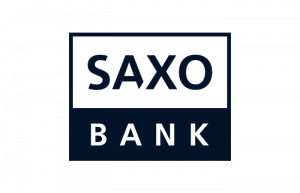Deciphering the Bitcoin Price Graph: Trends and Predictions
The bitcoin price graph is a crucial tool for understanding cryptocurrency market dynamics. This article explores how to interpret these trends and make informed investment decisions.

In the volatile world of cryptocurrency, the bitcoin price graph serves as a vital instrument for investors and traders alike, providing a visual representation of Bitcoin’s market performance over time. By analyzing the highs and lows, patterns, and trends depicted in these graphs, individuals can gain insights into potential future movements and make informed decisions regarding their cryptocurrency investments. Understanding how to read and interpret the bitcoin price graph is essential for navigating the cryptocurrency market effectively.
Key Features of the Bitcoin Price Graph
The bitcoin price graph typically displays the currency’s value against the US dollar over a selected time frame. Key features include the opening, closing, high, and low prices within specific periods, which can range from minutes to years. Additionally, volume indicators and moving averages are often incorporated to offer deeper insights into market sentiment and potential directional trends.
Analyzing Trends
One of the primary uses of the bitcoin price graph is to identify trends. Upward trends indicate increasing prices and possibly bullish market conditions, while downward trends signal declining prices and potentially bearish conditions. By recognizing these patterns early, investors can strategize entries and exits to maximize profits or minimize losses.
Understanding Volatility
The bitcoin price graph also highlights the cryptocurrency’s volatility. Sharp spikes and drops in the graph reflect significant price changes within short periods, which are common in the cryptocurrency market. Investors can use volatility indicators on the graph to assess risk and make decisions based on their risk tolerance levels.
Support and Resistance Levels
Support and resistance levels, visible on the bitcoin price graph, are crucial for technical analysis. Support levels indicate a price point where the market sees strong buying interest, preventing the price from falling further. Resistance levels, conversely, represent a price point where selling interest overcomes buying pressure, halting price increases. These levels can help investors identify potential buy or sell signals.
Predictive Analysis
Beyond historical analysis, the bitcoin price graph can also facilitate predictive analysis. By identifying patterns such as head and shoulders, double tops or bottoms, and triangles, traders can speculate on future price movements. However, it’s important to remember that predictions based on chart patterns are not guarantees and should be considered alongside other market analysis methods.
Making Informed Decisions
The ability to interpret the bitcoin price graph empowers investors to make more informed decisions. By combining trend analysis, volatility assessment, and pattern recognition, individuals can develop a comprehensive understanding of market conditions. It’s also crucial to stay updated with global economic news, regulatory changes, and technological advancements, as these factors can significantly impact Bitcoin’s price.
The bitcoin price graph is more than just a series of lines and numbers; it’s a window into the market’s soul, offering insights into past performances and potential future directions. For those willing to delve into its complexities, it offers the keys to more strategic and informed cryptocurrency trading and investment decisions. As with any financial endeavor, a balanced approach that combines technical analysis with fundamental analysis and current market news will yield the best results.









